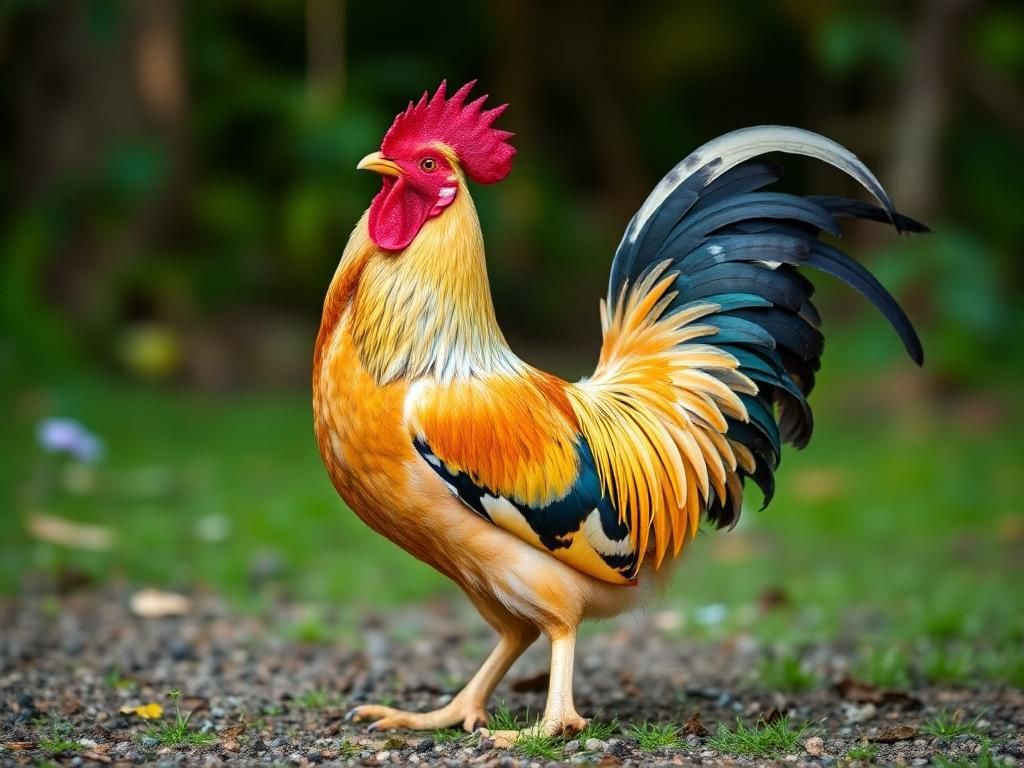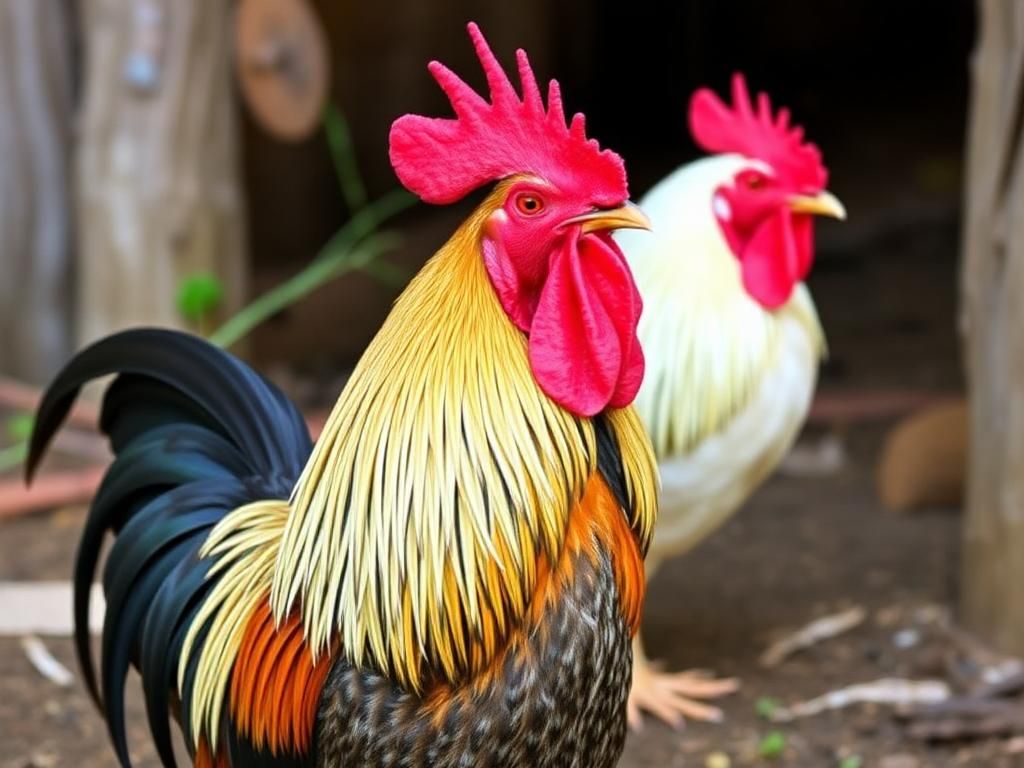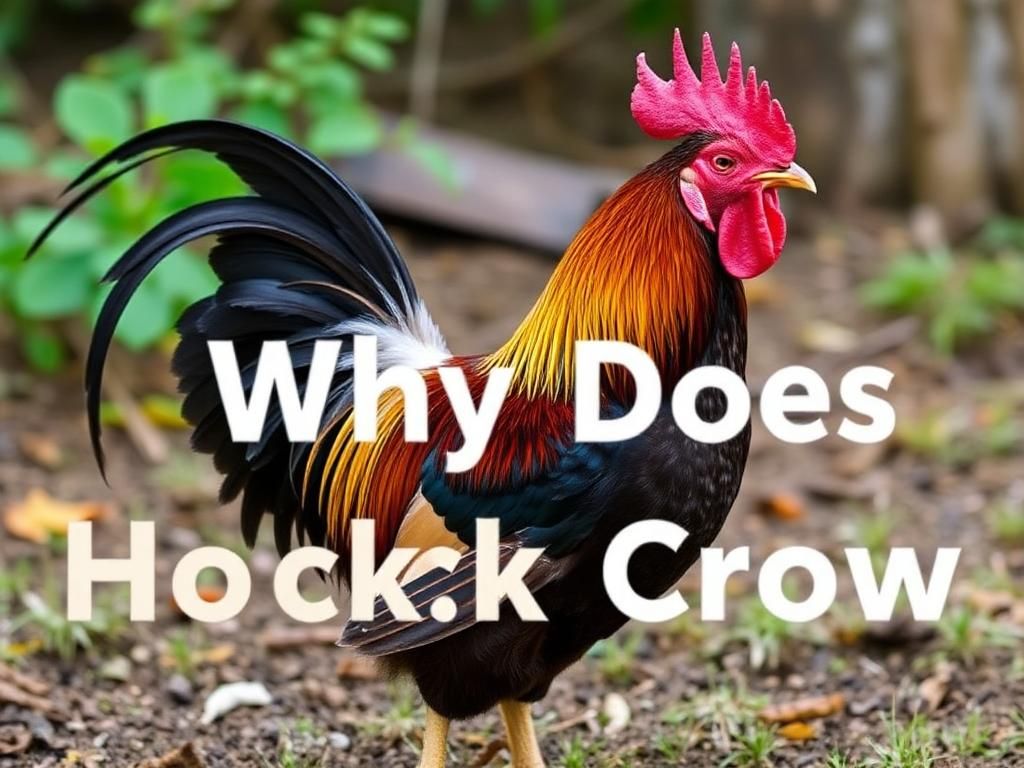The familiar sound of a rooster crowing has been associated with the break of dawn for centuries, serving as a natural alarm for both humans and wildlife. However, the question remains: why does a cock crow? In various cultures around the world, the rooster is not just a barnyard animal but deeply rooted in folklore and religious symbolism. This article will explore the multifaceted reasons for a rooster’s crow, delving into its biology, cultural significance, and more, offering a comprehensive understanding of this intriguing animal behavior.
Contextual Background
The Cultural Significance of Rooster Crowing
Across numerous societies, the rooster’s crowing has had significant cultural implications. In many cultures, the crow of a rooster heralds the dawn, symbolizing a new beginning and the promise of hope. In addition, roosters are often linked with various deities and mythologies, playing crucial roles in narratives that emphasize their vigilance and character as harbingers of light.
Folklore and Religion
Roosters are prominent in folklore, often viewed as symbols of bravery and watchfulness. In ancient cultures, they were revered, appearing in religious texts, rituals, and even in calendars. Understanding the deeper meanings behind why does a cock crow enriches our appreciation of the rooster’s role throughout history.
The Biology of Roosters
Understanding the Rooster’s Anatomy
The anatomy of a rooster significantly contributes to its crowing behavior. Primarily, the syrinx, located at the base of the trachea, functions as the vocal organ. Unlike human vocal cords, the syrinx allows for a broader range of sounds, making it well-suited for the distinct call of a rooster.
Differences Between a Rooster’s and Hen’s Vocal Cords
Roosters possess a more developed vocal apparatus than hens, which enables them to produce louder and more varied sounds. These differences are essential when considering why a rooster crows, particularly in establishing territory and communication.
Circadian Rhythm
Explanation of the Internal Biological Clock
Just like humans, roosters have an internal biological clock known as the circadian rhythm, which governs various physiological processes, including the timing of their crowing. This internal clock is influenced by environmental factors, particularly light exposure.
How Light Exposure Affects Crowing Behavior
The crowing of roosters is closely associated with the rise and fall of sunlight. As daylight begins to peak, the instinct to crow is triggered, signaling the start of a new day. This light sensitivity is a primary factor in understanding why does a cock crow.
Relationship Between Crowing and Day/Night Cycles
Research has shown that the intensity and frequency of crowing correlate with the length of daylight experienced throughout the year. In essence, as days get longer, roosters tend to crow more frequently at dawn, contributing to their reputation as nature’s alarm system.
The Purpose of Crowing
Communication with Other Fowl
One of the most important functions of a rooster’s crowing is communication. Roosters utilize their crow as a means to establish dominance and defend their territory. This characterizes the crow as a strong warning signal to other roosters.
Social Interactions Within a Flock
Within a flock, roosters also use their crow to maintain social hierarchy, convey mating signals, and alert hens to potential threats. This complex system of communication emphasizes the social nature of these birds, highlighting their role in sustaining flock dynamics.
Mating Rituals
Role of Crowing in Attracting Hens
Crowing plays a vital role in a rooster’s mating display, serving as a call that attracts hens. A rooster’s crow can signify health and vitality; thus, louder and more robust crows are often more appealing to potential mates.
Crowing as a Display of Health and Vigor
Natural selection favors roosters that crow effectively. A strong crow can indicate a rooster’s fitness, contributing to reproductive success. Understanding this aspect helps clarify why does a cock crow, as it embodies the survival of the fittest paradigm seen in nature.

Crowing Patterns and Timing
Morning Crowing
Crowning is most commonly associated with dawn. Unlike other birds, roosters have a specific time frame during which they crow—primarily at sunrise—signaling the start of a new day. Their natural instinct triggers them to crow as daylight breaks, making them an iconic representation of morning.
Influence of Natural Light on Behavior
The interplay between natural light and crowing behavior demonstrates the intimate relationship between the two. As the sun rises and light levels rise, roosters become more active, leading to increased crowing.
Crowing Throughout the Day
While morning crowing is the most recognized, roosters can and do crow throughout the day. Various factors trigger this behavior, including food availability, social interactions, or perceived threats to their territory. Crowing can act as a reminder of the rooster’s presence in the area, reinforcing his dominance.
Cultural Interpretations of Crowing
Folklore and Superstitions
In many cultures, the crowing of a rooster is steeped in superstition, symbolizing various ideas, ranging from good fortune to ill omens. In some traditions, it is considered a protective presence, warding off evil spirits, highlighting the depth of cultural interpretations surrounding why does a cock crow.
Symbolism in Different Cultures
The symbolism of crowing can vary drastically. For instance, in some Asian cultures, a rooster’s call is seen as an announcement of the day, while in others, it may signify a warning to wake up and be vigilant.
Literary References and Symbolism
Roosters have also left a prominent imprint in literature and poetry, often symbolizing vigilance and the passage of time. Classic tales frequently employ the imagery of crowing, enriching the narrative’s meaning and deepening the connection between natural animal behaviors and thematic elements.
Additionally, phrases like “cock-a-doodle-doo” have entered colloquial language, further exemplifying how the sound and actions of a rooster have influenced English idioms and expressions.
The Science Behind the Sound
Acoustics of Crowing
The distinct sound of a rooster’s crow is a fascinating subject in acoustics. The crow can reach frequencies that carry effectively over long distances, allowing it to be heard by other fowl and animals. Understanding the sound spectrum of crowing provides further insight into why does a cock crow and its evolutionary advantages.
Why the Sound Carries Effectively Over Distances
Researchers have noted that the structure and tension of a rooster’s vocal cords, along with the shape of its beak, contribute to the amplification of the sound. This natural design allows the crow to serve its purpose in communication clearly and effectively.
Research Studies
Recent studies have analyzed the frequency and patterns of crowing, focusing on how different environments and stimuli affect behavior. Findings suggest that factors such as stress and alertness can significantly influence the timing and volume of a rooster’s crow.
Conclusion
Summary of Key Points
A comprehensive exploration of why does a cock crow reveals a multifaceted understanding that extends beyond mere sound. From biological and social contexts to cultural significance, the rooster stands as a remarkable figure in the animal kingdom.

Final Thoughts
Understanding the behavior of animals, particularly of roosters, provides insight into their essential roles within ecosystems and agriculture. This knowledge is crucial for anyone engaged in animal husbandry or simply interested in the natural world.
Additional Resources
Further Reading
For those intrigued by animal behavior and poultry care, consider exploring resources like The Happy Chicken Coop and various scholarly articles that address animal communication and welfare in depth.
Documentaries and Media
For visual learners, documentaries such as “The Secret Life of Chickens” provide a wonderful exploration of avian behavior and communication.
Table Summary of Key Points
| Aspect | Details |
|---|---|
| Biology | The syrinx and its role in vocalization. |
| Circadian Rhythm | Influence of light on crowing patterns. |
| Communication | Establishing territory and social hierarchy. |
| Mating | Role of crowing as a mating display. |
| Cultural Interpretations | Symbolism in various cultures and folklore. |
| Science | Acoustics of crowing and its effectiveness. |
FAQ Section
1. Why do roosters crow?
Roosters crow for various reasons, including establishing territory, communicating with flock members, and attracting mates.
2. What time do roosters typically crow?
Roosters usually crow at dawn, but they can crow throughout the day in response to different stimuli.
3. What does crowing signify culturally?
Culturally, crowing can symbolize various things, such as a herald of dawn or a sign of good luck or protection.
4. How is a rooster’s crow different from a hen’s call?
Roosters have a more developed vocal apparatus that allows for louder and more varied sounds compared to hens.
5. Can the frequency of crowing be affected by environmental factors?
Yes, environmental factors, such as the presence of predators or changes in light, can significantly influence the frequency and intensity of crowing.
6. Are there studies on rooster behavior?
Yes, recent studies have examined the patterns and frequencies of crowing, focusing on how stress and alertness impacts their behavior.
7. Do all chickens crow?
Typically, only roosters crow. Hens have different vocalizations primarily for communication within the flock.
8. Is there a specific reason roosters crow in the morning?
Crowing in the morning is closely tied to the rooster’s natural circadian rhythm, which is influenced by light exposure.
9. How can I attract a rooster to crow at home?
To encourage natural crowing, ensure your rooster has adequate light exposure and a secure environment.
10. What can I do if my rooster crows at inconvenient times?
If a rooster crows excessively at unwanted times, consider placing it in a darker area to reduce its exposure to light, which may minimize crowing.
